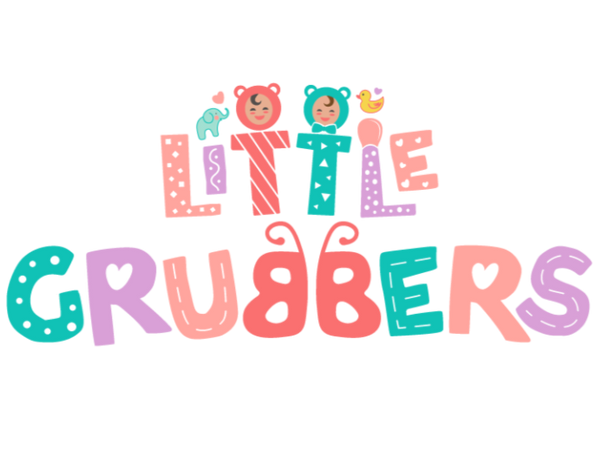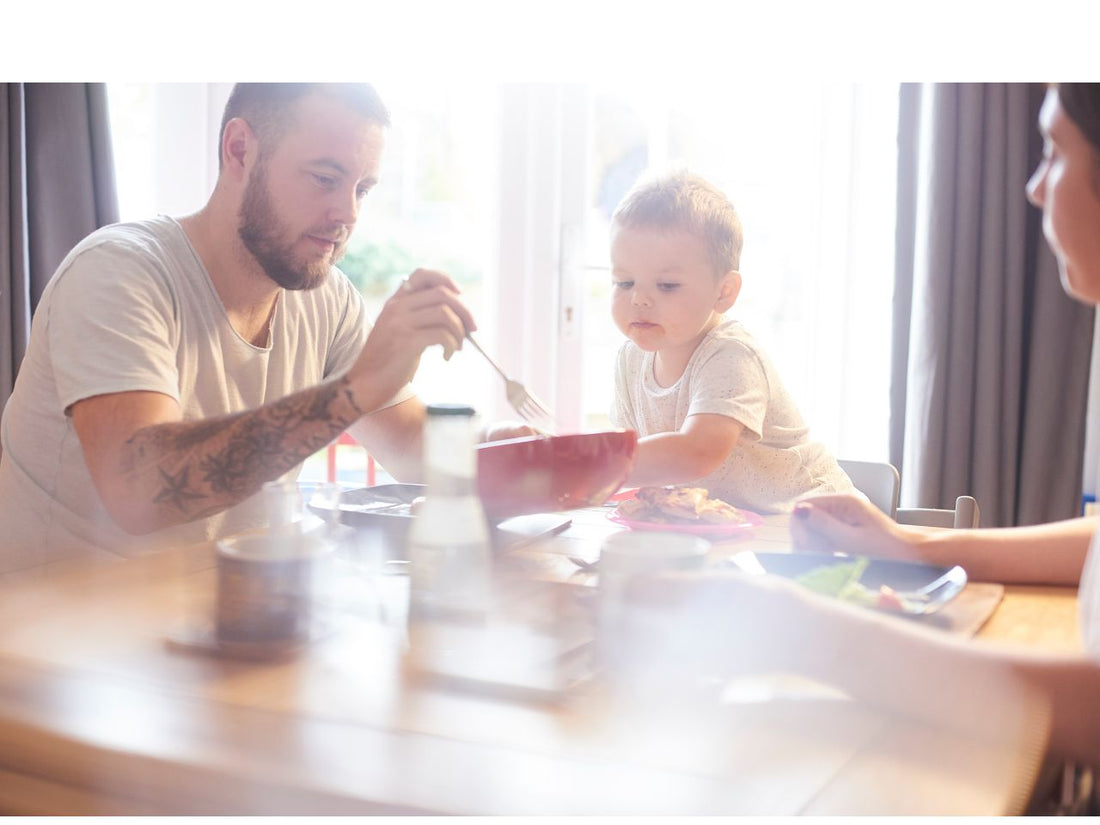Is It Time to Move Beyond Baby Food?
One day, your little one is happily gobbling up purees and baby cereals, and the next, you're wondering: When should I start transitioning from baby food?
Moving from baby-specific foods to regular family meals is a big milestone, but it can also bring a mix of excitement and uncertainty. What if your baby chokes? What if they refuse table food? How do you know when they’re ready?
The good news? With a little patience and guidance, you can make this transition smooth and stress-free for both you and your baby. Let’s dive into the signs of readiness, tips for making the switch, and easy ways to encourage healthy eating habits as your little one grows!
Signs Your Baby Is Ready to Move Beyond Baby Food
There’s no one-size-fits-all answer for when to stop baby-specific foods, but most babies start showing signs of readiness between 9-12 months and fully transition by 12-18 months. Here’s what to look for:
✔ Shows Interest in Your Food – If your baby watches you eat or reaches for your plate, they’re curious about table foods.
✔ Can Chew Soft Solids – Even without a full set of teeth, babies can mash soft foods using their gums.
✔ Wants to Self-Feed – Babies who grab at the spoon or pick up food with their fingers are ready for more independence.
✔ Eats a Variety of Textures – If they’re comfortable with mashed foods, introduce more solid textures like soft-cooked vegetables or shredded chicken.
✔ Less Interest in Purees – If your baby starts rejecting purees or spoon-fed meals, they may be ready for more grown-up foods!
💡 Pro Tip: Every baby develops at their own pace. Follow their cues and don’t rush the process!
How to Start Transitioning from Baby Food
Once you notice signs of readiness, you can gradually introduce table foods while keeping some familiar baby foods in the mix.
1. Start with Soft, Easy-to-Chew Foods
At first, choose foods that are soft and easy to mash with gums, such as:
🥑 Avocado slices
🍌 Banana pieces
🥕 Steamed carrots
🍠 Roasted sweet potatoes
🍗 Shredded chicken
🧀 Soft cheese cubes
Avoid large, hard, or sticky foods that pose a choking risk, such as whole grapes, hot dogs, nuts, or sticky peanut butter.
2. Encourage Self-Feeding
Babies love independence! Offering finger foods allows them to explore different textures and develop fine motor skills.
🥄 Try a baby-friendly utensil like the Little Grubbers 3-in-1 Baby Spoon™, which helps babies practice scooping and self-feeding.
💡 Tip: Don’t worry if they make a mess—playing with food is a normal part of learning to eat!
3. Serve Family Meals (With Modifications)
Babies learn by watching! Instead of preparing separate baby food, start serving modified versions of family meals:
✔ Eating pasta? Serve soft, bite-sized pieces without heavy sauces.
✔ Cooking chicken? Shred or cut into small, tender pieces.
✔ Making soup? Offer soft veggies and broth without added salt.
This helps your baby adjust to family foods while still keeping it safe and appropriate for their stage.

4. Gradually Phase Out Purees
If your baby is still eating purees, start thickening the textures over time:
🔹 Blend less – Instead of smooth purees, try mashing with a fork.
🔹 Mix textures – Add small chunks of food into purees (e.g., mashed banana with soft oat pieces).
🔹 Serve purees as dips – Use them as spreads for toast or dips for crackers.
By slowly reducing purees, your baby will become more comfortable with chewing and handling solid foods.
5. Keep a Routine, But Stay Flexible
As your baby transitions to toddler mealtime, it helps to have a structured routine with regular meal and snack times.
Example Toddler Mealtime Schedule:
🍳 8:00 AM – Breakfast (Scrambled eggs & toast)
🍎 10:30 AM – Snack (Soft fruit & yogurt)
🥗 12:30 PM – Lunch (Shredded chicken & veggies)
🧀 3:00 PM – Snack (Cheese cubes & whole grain crackers)
🍽 6:00 PM – Dinner (Family meal with modifications)
At the same time, expect some ups and downs! Some days your baby might eat everything, and other days they’ll be picky. That’s okay! Trust their appetite and keep offering a variety of foods.
Common Concerns About Transitioning From Baby Food
❓ What if my baby gags on table food?
Gagging is normal and different from choking. It’s your baby’s way of learning how to move food safely in their mouth. Offer small, soft pieces and stay calm.
❓ What if my baby refuses table food?
It can take 10-15 tries before a baby accepts a new food! Keep offering it without pressure—eventually, curiosity will kick in.
❓ What if they still love purees?
Some babies take longer to enjoy textured foods. Instead of stopping purees suddenly, mix them with solid foods to ease the transition.
Final Thoughts: Enjoy the Journey!
Transitioning from baby food is a big step, but it doesn’t have to be stressful. By watching for signs of readiness, offering soft, easy-to-eat table foods, and keeping meals fun and pressure-free, your baby will gradually become a confident eater!
✨ Make self-feeding easier with the Little Grubbers 3-in-1 Baby Spoon™! ✨
Perfectly designed for little hands, it helps babies practice independent eating during this exciting transition.
🛒 Check it out here.
💬 How was your baby’s transition from baby food? Share your experience in the comments! 😊

